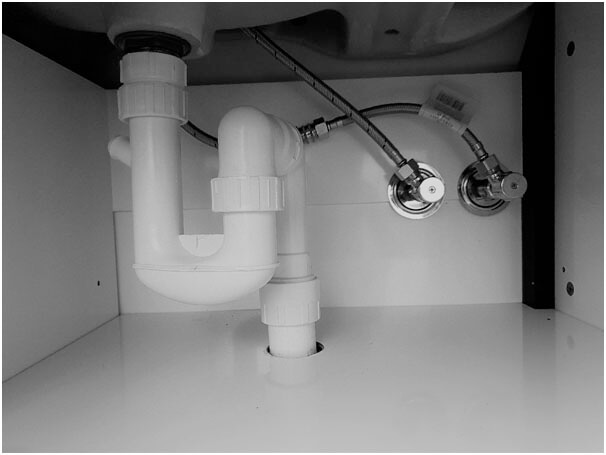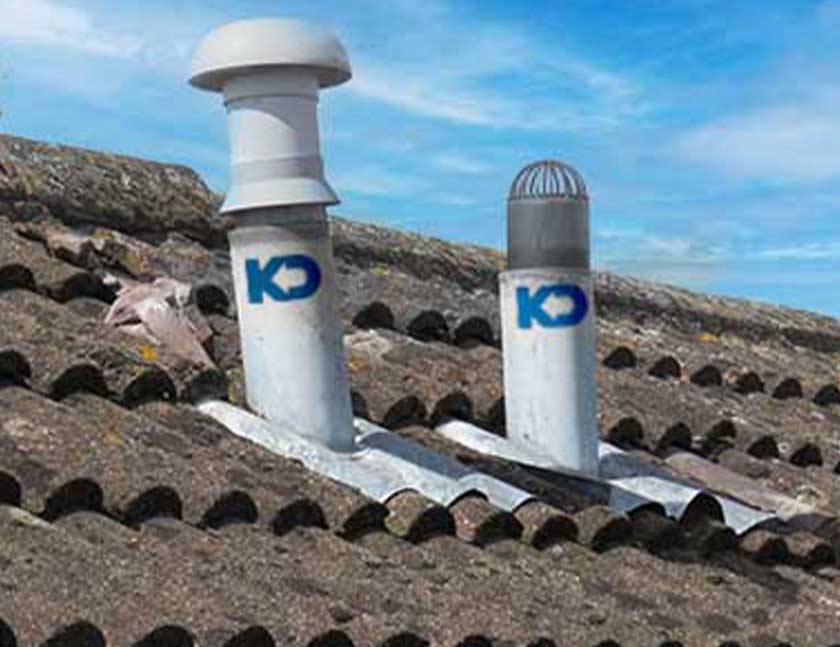How Proper Ventilation is Essential for Plumbing Systems
How Proper Ventilation is Essential for Plumbing Systems
Blog Article
This great article following next relating to What Is A Plumbing Vent & How Do They Work? is immensely compelling. Read on and make your own final thoughts.

Appropriate ventilation in pipes systems is commonly neglected, yet it is crucial for keeping the performance and safety and security of your home's pipes. Ventilation assists manage atmospheric pressure, stop the accumulation of dangerous gases, and make certain the reliable removal of waste. In this overview, we will certainly explore the importance of appropriate plumbing ventilation, just how it works, and the benefits it gives your pipes system.
How Ventilation Works in Plumbing Equipments
Atmospheric Pressure Regulation
Proper ventilation preserves well balanced air pressure within the plumbing system. When water streams with pipelines, it displaces air. Without sufficient ventilation, this variation can produce unfavorable pressure, causing slow down drains pipes or siphoning of water from traps, which can cause unpleasant odors to permeate right into the home.
Avoiding Drain Gas Buildup
One of the most crucial features of pipes vents is to prevent sewage system gases, such as methane and hydrogen sulfide, from accumulating within the home. These gases can pose significant health and wellness dangers and are highly combustible. Vent pipes permit these gases to leave safely outdoors.
Assisting in Waste Removal
Air flow helps in the reliable elimination of wastewater by preventing airlocks in the water drainage system. When air can stream freely with the vents, it enables water and waste to move efficiently with the pipes, decreasing the danger of clogs and backups.
Advantages of Appropriate Air Flow
Boosted System Effectiveness
Appropriately aerated pipes systems operate extra successfully, with less obstructions, faster draining pipes, and less pressure on the pipes. This effectiveness expands the life-span of the plumbing system.
Improved Air Quality
By protecting against sewer gases from entering your home, appropriate ventilation adds to better interior air quality, making your living setting healthier and extra comfy.
Avoiding Water Damages
Ample ventilation aids avoid water from being siphoned out of catches, which can lead to drain gases going into the home and triggering water damages gradually.
Steps to Make Sure Proper Air Flow
Consulting Plumbing Codes
Always get in touch with regional pipes codes when developing or modifying your pipes system. These codes supply the required guidelines for appropriate airing vent and ensure your system meets safety and security standards.
Normal Evaluation and Upkeep
Regular evaluations can assist identify prospective ventilation problems before they end up being significant troubles. Maintenance tasks, such as cleaning vent pipelines and checking for clogs, are crucial for maintaining the system in good working order.
Professional Installment
For new installations or significant adjustments, it's wise to work with an expert plumbing professional. They have the know-how to guarantee the ventilation system is correctly made and mounted according to code.
Understanding Air Flow in Pipes
Air flow in plumbing describes the network of pipelines that permit air to move via the drainage system. These vents offer several objectives, consisting of regulating air pressure within the pipes, stopping sewage system gases from getting in the home, and assisting in the smooth flow of wastewater.
Types of Pipes Vents
Main Heap Vent
The main pile air vent, also known as the air vent pile, is the main air vent in a pipes system. It extends from the main drainpipe align with the roof, permitting gases to leave and fresh air to get in the system.
Branch Vent
Branch vents link to the major pile air vent and serve individual components, such as sinks, commodes, and showers. These vents ensure that each fixture has appropriate air flow to operate effectively.
Air Admittance Valve (AAV).
An Air Admission Valve (AAV) is a one-way valve that enables air to get in the pipes system without the requirement for a conventional air vent pipeline extending with the roof covering. AAVs are generally made use of in remodellings or areas where setting up a typical vent is impractical.
Indicators of Poor Ventilation in Pipes.
Slow Draining Fixtures.
If your sinks, bathtubs, or bathrooms are draining slowly, it could be an indication of inadequate ventilation. Insufficient air circulation can create a vacuum result, making it hard for water to drain appropriately.
Gurgling Seems.
Gurgling audios originating from drains pipes are frequently an outcome of air being drawn with water traps due to unfavorable stress in the pipes. This is a clear indicator of not enough ventilation.
Unpleasant Odors.
Drain smells inside your home are a warning that your plumbing system is not appropriately ventilated. This might indicate that sewer gases are not being adequately vented outside, leading to potentially harmful problems.
Usual Air Flow Mistakes.
Poor Vent Sizing.
Utilizing small air vent pipes can lead to inadequate air circulation and stress discrepancies in the system. It's essential to utilize vents that satisfy the details requirements of your plumbing system.
Improper Vent Placement.
Putting vents too much from the components they offer can reduce their efficiency. Proper positioning ensures that air can flow easily and effectively through the system.
Disregarding Code Needs.
Building regulations give specific standards for plumbing air flow. Overlooking these codes can lead to a system that falls short to function correctly and might result in expensive fixings or carcinogen.
Conclusion.
Proper ventilation is a crucial element of any kind of plumbing system, making certain that it functions effectively and securely. By comprehending the significance of air flow, acknowledging the indications of bad ventilation, and taking steps to keep your system, you can protect against pricey problems and safeguard your home's air quality.
4 Things You Should Know About Your Plumbing Vents
What Plumbing Vents Are
Also called a vent stack, a plumbing vent is a vertical pipe attached to your drain line that runs through your roof. The plumbing vent pipe, or plumbing air vent, removes gas and odors from your plumbing system and allows fresh air to enter the pipes, helping the water to flow out of the drain pipes.
What Plumbing Vents Do
Plumbing vents have two basic functions. One of which is to allow unpleasant smelling wastewater and sewer gasses to escape your plumbing system instead of entering your home. Plumbing vent pipes are typically located on roofs, away from windows, to ensure the fumes exit the home completely.
The other function of the plumbing vent is to move fresh air into your plumbing system. This helps move water through every plumbing fixture in your house, like toilets and sink drains. Think of the way in which you need to let a little air into the bottle as you pour soda in order to make the drink flow smoothly.
Different Types of Plumbing Vents
True vent: This is the most common vent option. In simplest terms, a true vent is a vertical pipe attached to your drain line that exits through the roof. They often function as the main vent that other fixtures can connect to. Re-vent pipe or auxiliary vent: Attached to the drain line near specific plumbing fixtures, re-vent pipes run up and over to connect to the main vent. Common vent: Two plumbing fixtures installed on opposite sides of a wall are typically tied into the vent stack using something known as a sanitary cross. Wet vent: This venting option operates as a drain pipe and a vent at the same time. Wet vent drainage systems drain water from one fixture while venting the air from another. Although they’ve been used for over 100 years, wet vent systems have only recently been added to the plumbing code in many areas. If you’re planning on installing one in a bathroom remodel, make sure you check your local code prior to construction. Loop vent: For free-standing fixtures like kitchen island sinks, loop vents are ideal. These vent pipes run under the floor, rise from the P-trap, and create a loop inside the cabinet sink. Air admittance valve: An AAV is a one-way mechanical valve typically installed at the site of the plumbing fixture. AAVs allow venting to occur without having to tie into a larger venting system. They’re ideal for venting fixtures where you aren’t able to easily connect to an existing vent system. Common Plumbing Vent Issues
Although vent pipes typically don’t have water flowing through them, they’re still subject to many typical plumbing issues. For example, clogs are one of the most common problems associated with sewer vent pipes. If your vent pipe gets clogged, all of your plumbing fixtures tied into the vent stack will be affected.
A sink with a slow drain that bubbles and gurgles or a strong sewage smell around your toilet are both indicators that your toilet vent pipe is clogged. Because most vent pipes exit through the roof, old leaves, twigs or even a bird’s nest could be clogging the pipe.
Clogs in your vent pipe system cause a buildup of negative pressure, meaning that water won’t be able to flow out of your home very well. It’s similar to putting your finger over the opening of a straw to trap water inside. When you remove your finger, the water is able to flow out of the straw.
If you suspect you have any blockage in your vent, make sure you have a professional come examine the situation. Left unchecked, a blocked air vent can lead to other costly repairs, like leaks and sediment buildup.
Under Pressure
Pipe vents are essential aspects of a home’s plumbing system. Owning a home means learning about all sorts of things you never put much thought into before. But by understanding as much as you can about the important systems of your home, you can keep those budgets intact and those anxiety levels low.
https://www.homeserve.com/en-us/blog/home-improvement/plumbing-vents/

I was brought to that editorial about The Upsides of Proper Ventilation in Plumbing Design from a good friend on a different web address. Sharing is caring. Who knows, you may very well be doing someone a favor. Bless you for being here. Come back soon.
Pricing Report this page